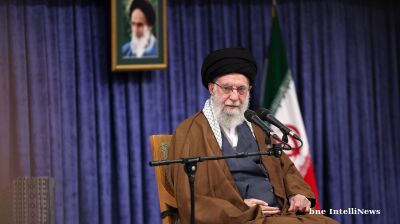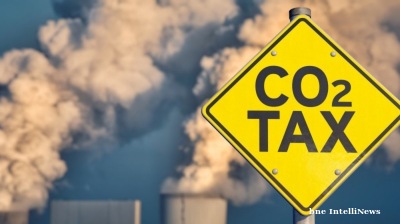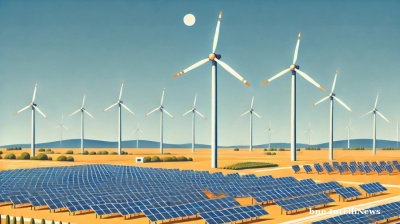The Russian exclave on the Baltic Sea has become an energy island after the Baltics States cut themselves off from the Soviet-era BRELL power grid on February 8 and has become vulnerable to sanctions thanks to its dependence on Lithuanian gas transit.
The BRELL ring links the power grids of Belarus, Russia, Estonia, Latvia and Lithuania and was set up in Soviet times. After years of dithering, the Baltic states finally formally disconnected their power grid from Russia's controlled northern electricity grid and intend to connect to the European Network of Transmission System Operators for Electricity (ENTSO-E) grid this week, breaking long standing energy ties with Russia.
"Today, history is made. We connect the Baltic states to our continental European electricity grid. Electricity lines with Russia and Belarus are being dismantled. These chains of power lines linking you to hostile neighbours will be a thing of the past," European Commission President Ursula von der Leyen said during a trip to Vilnius to mark the occasion. "This is freedom: freedom from threats; freedom from blackmail.”
One of the more remarkable stories from the Ukrainian war is that Ukraine managed to hook up to the ENTSO-E only one day before the Russian invasion. After Russia destroyed half of Ukraine’s power generation capacity in 2024, this winter would have been much more difficult, if Ukraine could not rely on imported power supplies from the EU to get through the heating season.
“Today is a big day for our region and for Europe as a whole. The Baltic states – good friends of Ukraine – have officially disconnected from Russia’s power grid. Their energy systems are now fully synchronized with the continental European network,” Ukrainian President Volodymyr Zelenskiy said in his evening address following the change.
Ukraine already did this back in 2022, and now the Baltic states have finally freed themselves from this dependence. Moscow can no longer use energy as a weapon against them. This also means Europe is now even more united, Zelenskiy added. "More cooperation is needed with America – LNG gas, oil. More efforts are needed with partners in regions neighbouring the EU to import the necessary energy – the Caucasus, the Middle East, North Africa. The less Europe depends on Russia, the sooner we can guarantee real security for everyone."
The Baltic States have wanted to cut ties with the BRELL network since the invasion of Ukraine three years ago but have remained dependent on the grid to power their growing economies.
An important change in the grid was the launch of the controversial Belarusian Ostrovets (aka Astravets in Lithuanian) nuclear power plant (NPP) in 2020, built and financed by Russia, that produces significantly more power than Belarus needs, which Minsk hoped would become a cash generator from exports to the Baltic states.
While the Baltics were already talking about cutting ties to BRELL at the time, a cold winter in 2021 saw the three tiny republics import record amounts of power from Belarus that winter to cover their own shortfall in energy supplies. However, since then and following heavy investment into renewable sources, in the last few years the import of power from Belarus and Russia has fallen away to next to zero. Despite this, Belarus President Alexander Lukashenko recently floated plans to build a second NPP in Belarus, with an eye on boosting exports to the Russian market.
Kaliningrad stranded
The Russian authorities have been preparing for this for years, but despite heavy investment into new generating capacity, gas storage facilities and buying a LNG tanker dedicated to the region, the exclave remains heavily dependent on gas supplies that transit Lithuania, making it vulnerable to sanctions.
“Kaliningrad is now an energy island, meaning it must generate all its electricity independently,” Tomas Janeliūnas, the former Prime Minister of Lithuania, said in a post on social media. “There are no connections with Poland. And Lithuania? It’s no longer supplying or transferring power.”
Lithuania continues to transit natural gas to Kaliningrad, creating what Janeliūnas describes as a major “leverage point” over Russia. In 2023, Lithuania transited 2.3bn cubic metres (bcm) of gas to the exclave – equivalent to its entire annual consumption. “Kaliningrad still depends entirely on Lithuania's gas transit in day-to-day power plant operations,” he said.
Amongst the measures Russia took to improve Kaliningrad’s energy security were to double its gas-fired power capacity, constructing an €780mn gas storage facility with a capacity of approximately 800mn cubic metres, and acquiring the Marshal Vasilevsky tanker, a $300mn LNG terminal ship.
The LNG terminal could supply Kaliningrad’s full gas demand of up to 3.7 bcm per year, according to reports, but Janeliūnas points out that LNG is about four and half-times more expensive than the piped gas the enclave currently receives via Lithuania.
“If something happened to that pipeline in Lithuania… say, an accidental ‘anchor drop’ or a truck crash… Kaliningrad’s gas supply would be, let’s say – challenged,” says Janeliūnas.
“The Baltic synchronisation didn’t just cut off Russia’s grid,” Janeliūnas concluded. “It put Kaliningrad in a tight spot – where Lithuania may hold a key piece of the puzzle.”
News

Iran's Khamenei calls Trump a 'real terrorist'
Iran's Supreme Leader Khamenei tells Trump "what business is it of yours" regarding nuclear industry, calling US president's positions lies and bullying whilst rejecting claims of supporting Iranian people.
-fotor-bg-remover-20251020114620.png)
Bolivia elects centrist Rodrigo Paz to lead a nation in chaos
Bolivia has entered a new political era after Rodrigo Paz secured the presidency with 54.5% of the vote, defeating former conservative leader Jorge “Tuto” Quiroga.
_seen_here_meeting_with_Congressman_Jimmy_Panetta_201025_Cropped_1760946356.jpg)
Kazakhstan renews push for lifting of Jackson-Vanik trade restrictions
Visiting Astana official hopes for “speedy resolution.”




